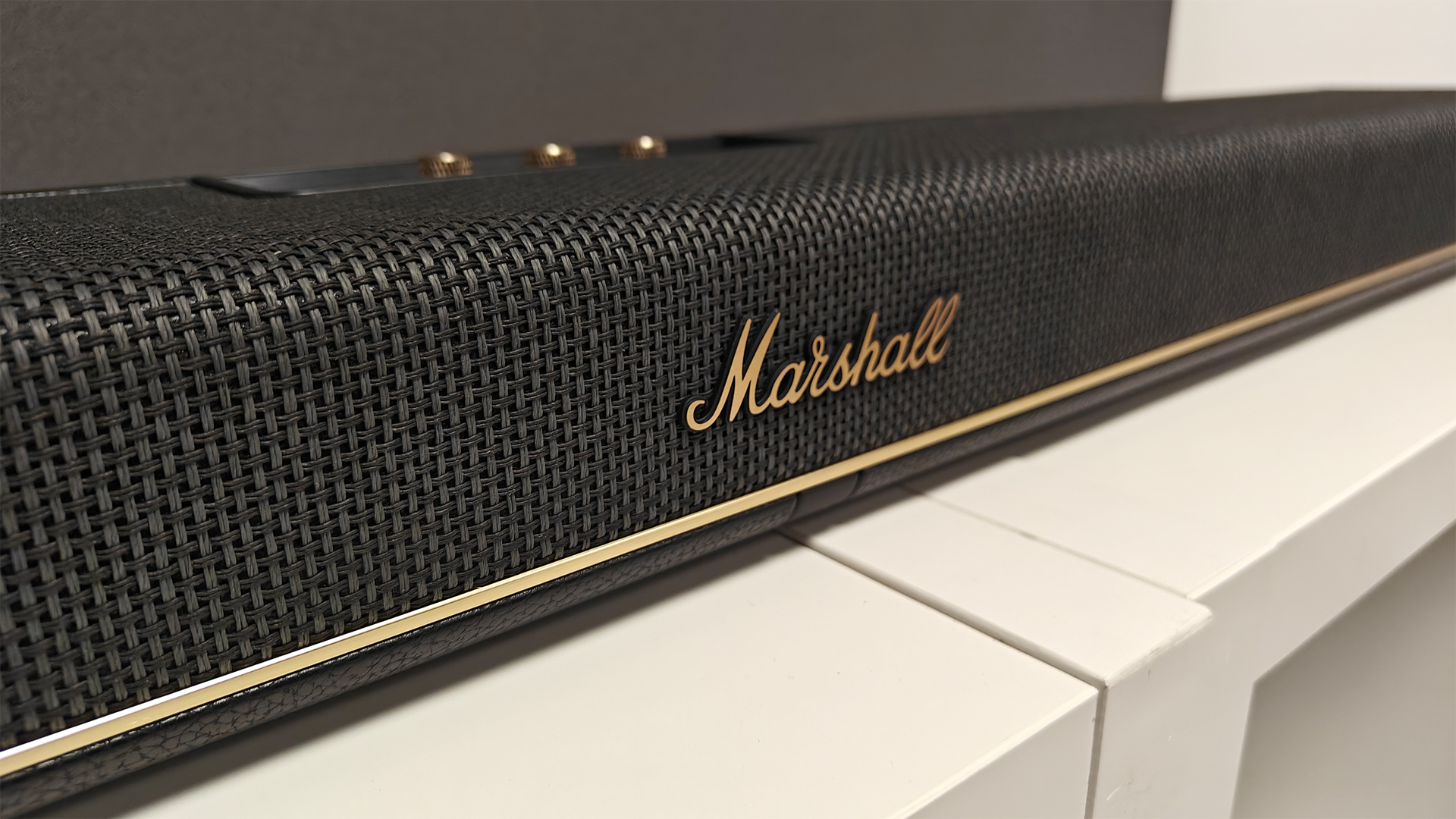What Hi-Fi? Verdict
While it clearly sounds better than any TV we’ve tested, the Marshall Heston 120 falls a long way short of the quality of the best Dolby Atmos soundbars at this level, which sound more exciting and fill a room more effectively
Pros
- +
Clear and detailed dialogue
- +
Decent amount of bass
- +
Unique design with tactile knobs
Cons
- -
Sound lacks dynamics and punch
- -
Slightly bright, sibilant treble
- -
Weak with Dolby Atmos
Why you can trust What Hi-Fi?
Marshall made its name with its rock and roll guitar amps, and the British brand has also been making wireless headphones and Bluetooth speakers for quite some time.
The Marshall Heston 120 is, however, its first soundbar.
As well as rocking classic Marshall styling, the Heston 120 has a 5.1.2 speaker configuration and supports both Dolby Atmos and DTS:X. It’s also being marketed by Marshall as “the loudest thing for your TV”. A bold statement indeed.
But how does the new soundbar actually perform?
Price
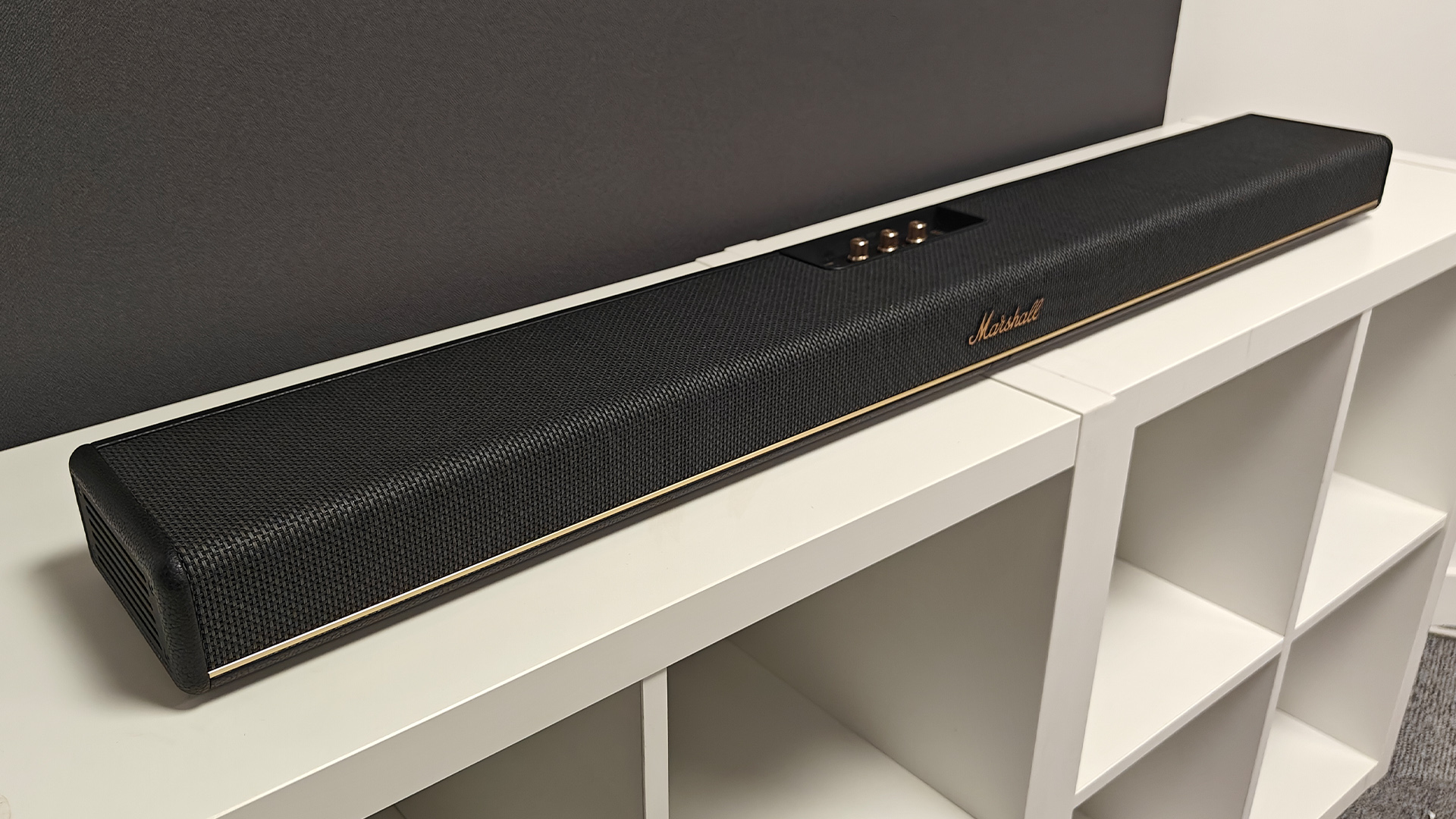
The Marshall Heston 120 costs £900 / $1000 / AU$1799.
That puts it firmly at the upper end of the market and in direct competition with five-star favourites such as the Sonos Arc Ultra (999 / $999 / AU$1799) and the Sony Bravia Theatre Bar 9.
The Bar 9 launched at the higher price of £1399 / $1400 / AU$1795, but we have seen regular drops that bring it down to a price more comparable with the Heston 120’s.
The latest hi-fi, home cinema and tech news, reviews, buying advice and deals, direct to your inbox.
The quality of these Dolby Atmos soundbars ensures there’s some stiff competition for Marshall’s first soundbar.
Build
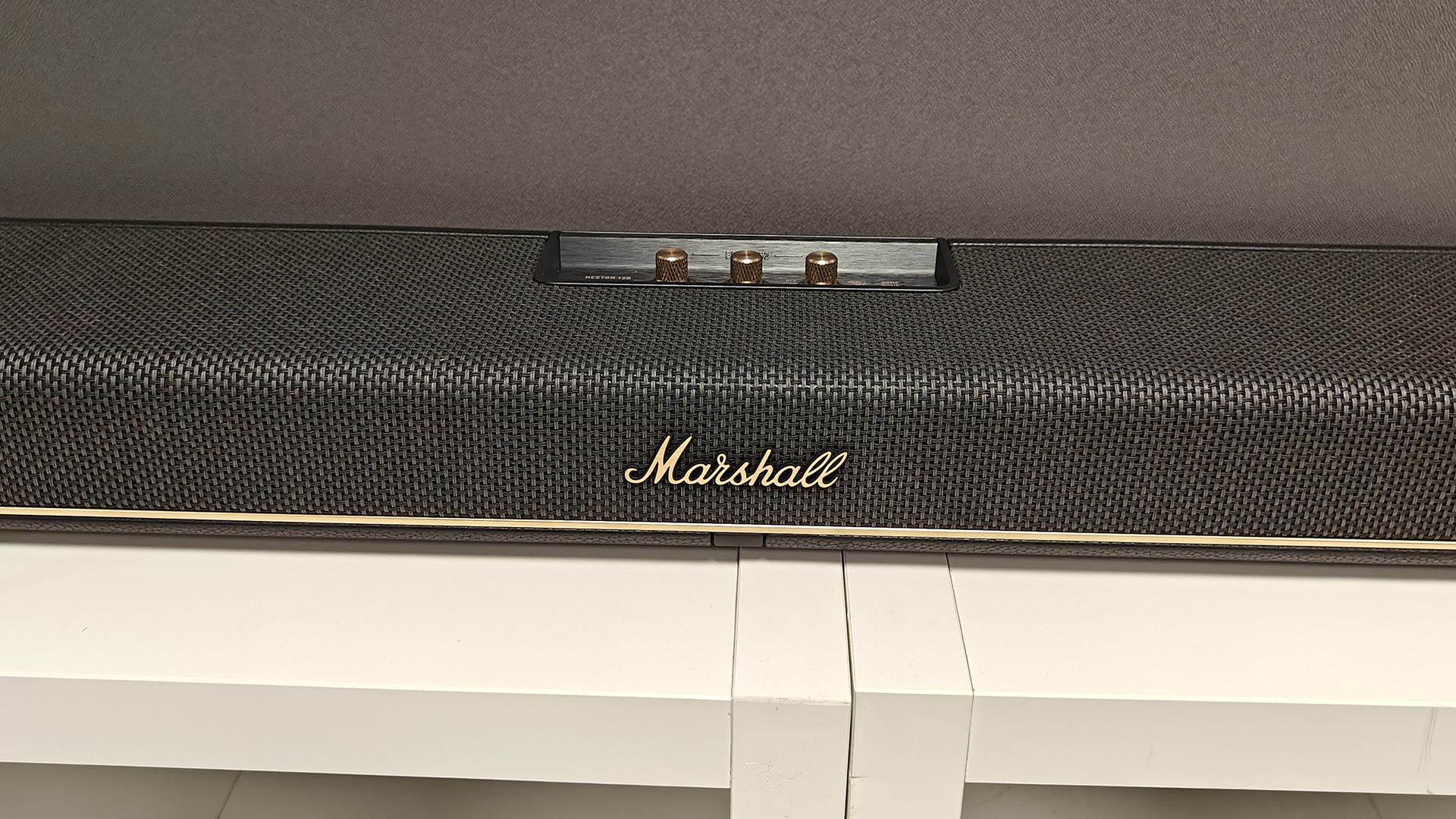
Soundbars have a tendency to look quite dull. And we get it, it’s hard to make a black or white rectangular bar look jazzy.
Marshall has made its model stand out with a retro design in keeping with its other products. The rotating metal knobs on the top, for example, certainly take a page from Marshall’s amp designs.
These knobs allow you to adjust the volume, source, sound mode, bass and treble. They even illuminate red when you interact with them, with a more solid colouring on the selected setting.
There are also three buttons that can be customised for super-quick access to your favourite playlists or radio stations.
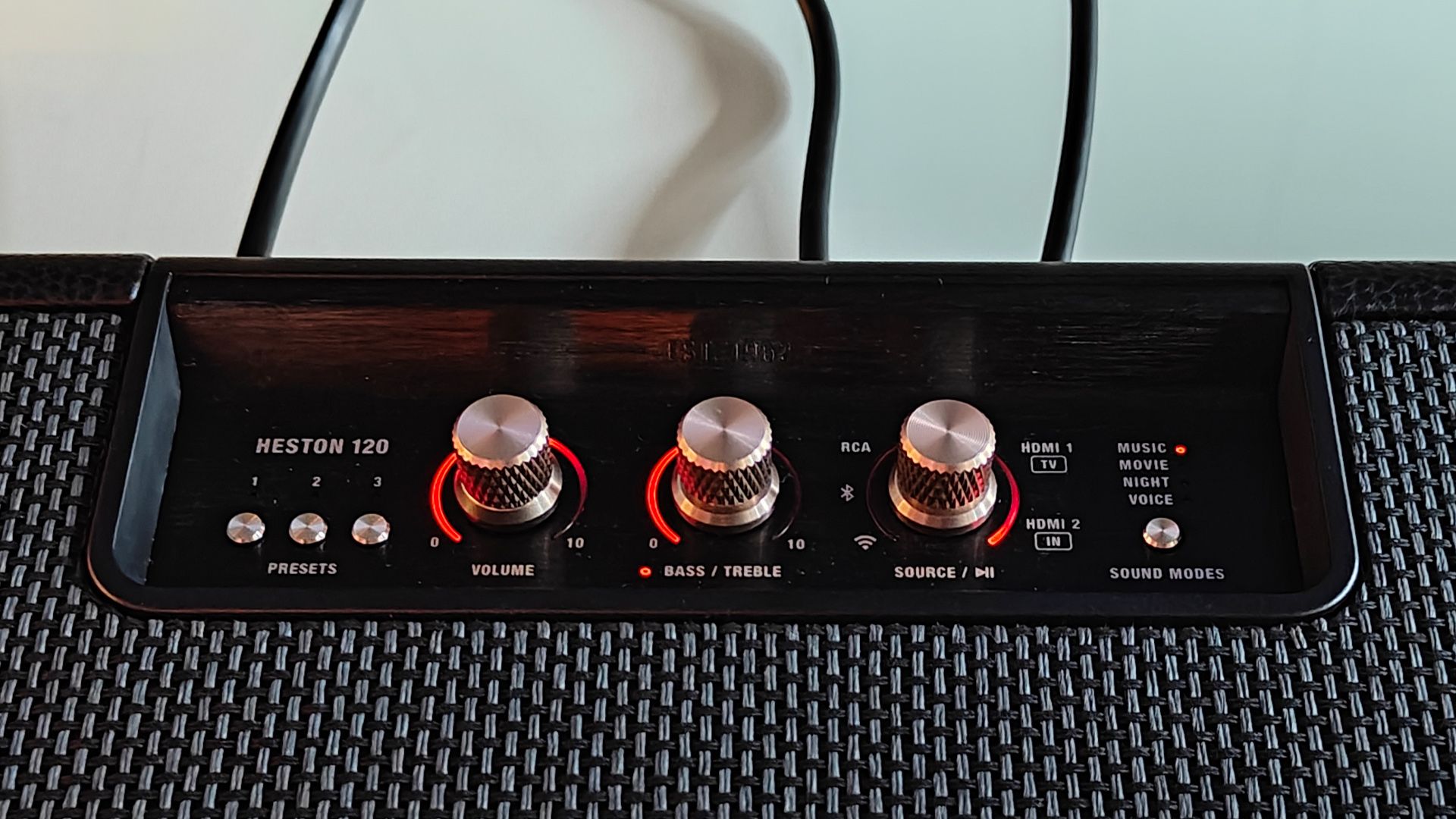
At the front of the soundbar, there is a removable grille made from sturdy woven paper. The body consists of wrapped leather trims and a brushed metal panel.
It might not be to everyone’s taste, but the textured feel and light-up display do certainly make it a unique proposition.
The only thing to be aware of is that it has quite a long design, as the soundbar measures 110cm in length.
That means you will need a full rack to accommodate its size. For those on the hunt for a smaller bar, Marshall has said that a more petite model will be released later in the year – the Heston 60.
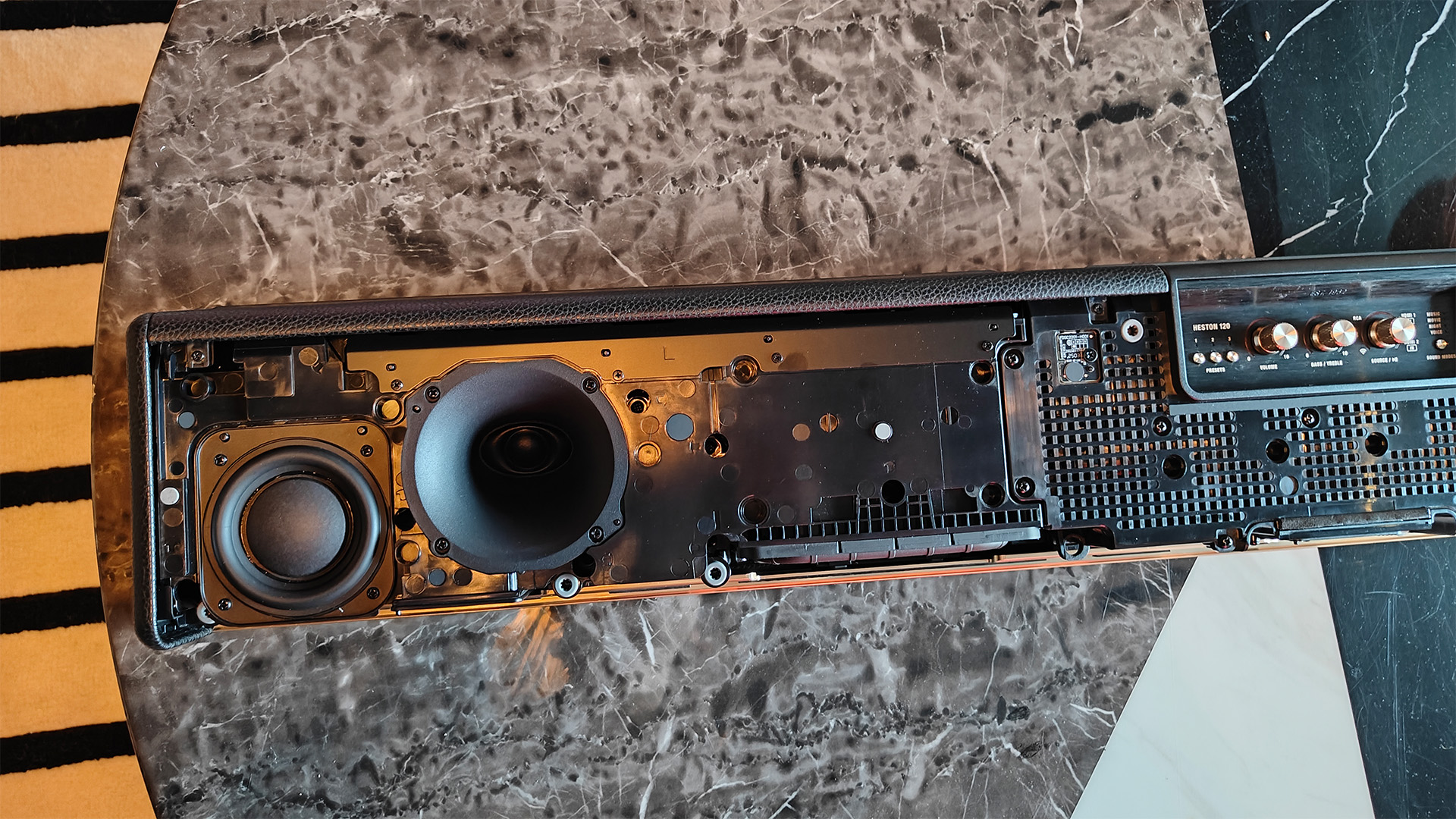
Under the hood, there are five full-range drivers, two tweeters, two mid-woofers and two subwoofer units.
Three of the full-range drivers are positioned at the front of the soundbar, leaving the remaining two at either end in order to fire the sound sideways. The tweeters and mid-woofers are upwards firing.
That leaves the rectangular bass drivers facing forward towards the listener, with four passive radiators around the back to boost the lower frequencies.
On a sustainability note, the soundbar is designed so that it can be repaired easily. That includes being able to unscrew and replace the fret, end caps, drivers and circuit boards.
This is a rare and positive sight on a soundbar. The only other recent soundbar we can think of with a similar repair-focused design is the premium Bang & Olufsen Beosound Theatre.
Features
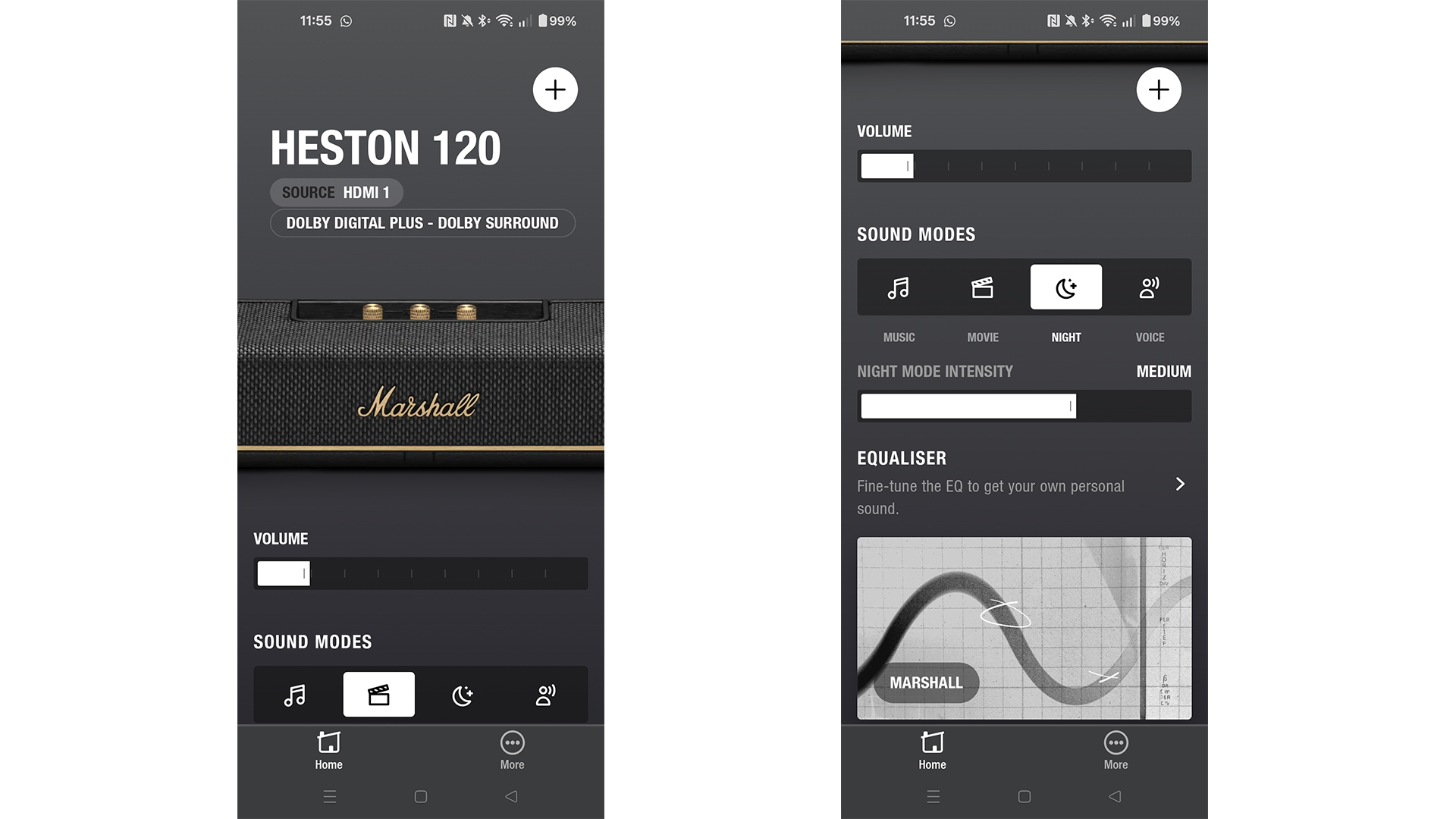
Each driver is powered by a dedicated Class D amplifier, giving a peak power output of 150W for the 5.1.2 bar. For comparison, the Sonos Arc Ultra has 14 drivers, 15 Class D amplifiers and a 9.1.4-channel configuration – though Sonos doesn’t quote a peak power output.
Of course, it’s not the number of drivers of amplifiers that matters – it’s what you do with them.
Unlike the Sonos Arc Ultra, the Marshall Heston 120 supports DTS:X as well as Dolby Atmos, which will be a big deal to a fairly small portion of hardcore home cinema fans.
In the music streaming department, the Marshall supports Spotify Connect and Tidal Connect, plus Bluetooth 5.3, Google Cast, Apple AirPlay 2 and Airable internet radio.
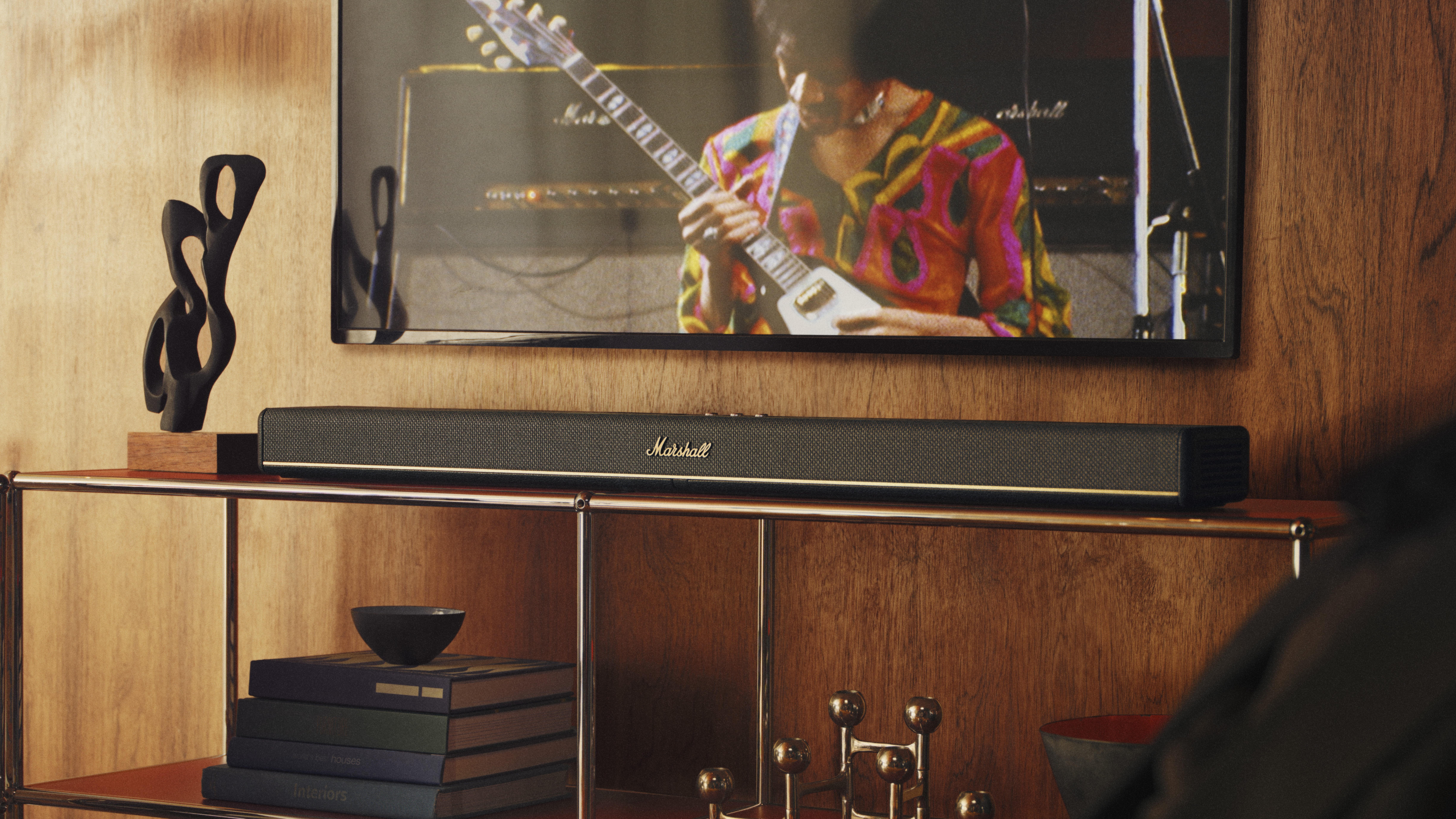
Connectivity HDMI eARC, HDMI 2.1 input, stereo RCA, subwoofer out, Bluetooth 5.3, wi-fi
Format support Dolby Atmos, DTS:X
Bluetooth? Yes, 5.3
Streaming? Google Cast, AirPlay, Spotify Connect, Tidal Connect
Voice control? No
Dimensions (hwd) 7.6 x 110 x 15cm
Weight 7kg
There is HDMI eARC for connection to your TV, plus a dedicated HDMI input, which is something the Sonos Arc Ultra doesn’t have. The Marshall will even pass through 4K/120Hz signals, which will be music to the ears of hardcore gamers with precious few HDMI 2.1 sockets on their TVs.
The Marshall Heston 120 doesn’t come with a remote, but you can of course control volume through your TV’s remote, and there is, inevitably, a companion app.
Through this app you can control everything from volume to EQ. The app is easy to set up and provides a simple selection of menu options.
On the home page (or via the button on the top), you can switch between the Heston 120’s different EQ modes: Movie, Music, Voice and Night. It’s worth noting there’s no Standard or Direct option here.
Movie mode widens the soundstage while keeping the midrange central, whereas Music narrows the sound to make the vocals more direct.
Voice works to highlight the dialogue, and Night compresses the dynamic range and reduces bass so as not to disturb others in your household (or your neighbours, if you’re really cranking the volume).
You can fine-tune the EQ in Movie and Music, and the other modes offer the option to adjust the intensity of the setting.
Through the app you can also calibrate the soundbar to the room using its built-in microphones.
The changes in our dedicated test room are minor, but in the less ideal conditions of a typical living room, they could be more pronounced. It’s certainly worth going through the simple process to find out.
Sound
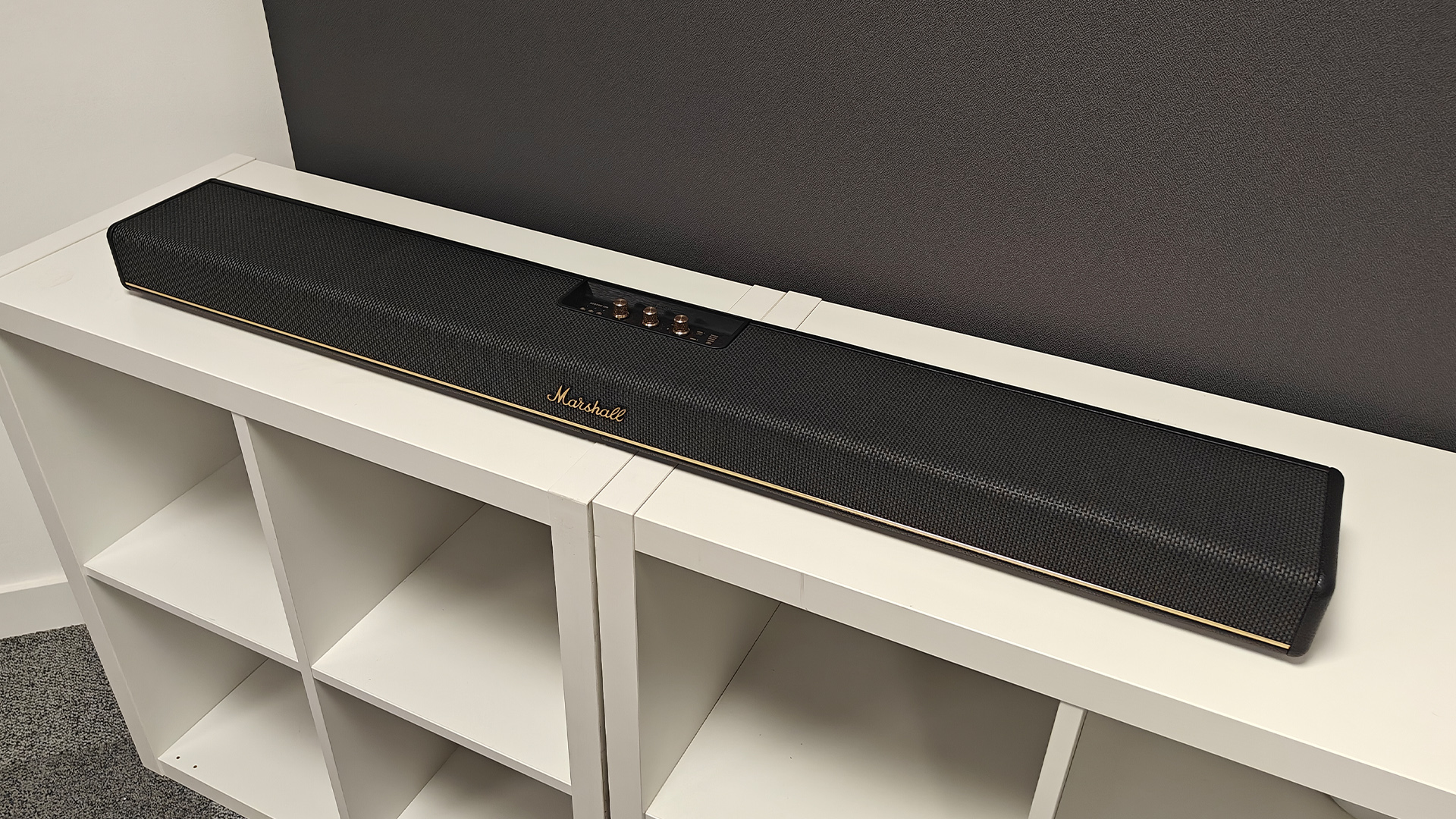
After a thorough running-in period, we begin our testing in earnest, using an array of Dolby Atmos movies that include Civil War, Blade Runner 2049, Dune: Part Two and more.
As you would very much expect, the soundbar is a huge improvement on the sound you get from a TV, with far greater weight, body and spaciousness. It’s not, however, in the same league as the very best soundbars in this class, particularly the Sonos Arc Ultra with which we compare it.
That isn’t to say that this Marshall doesn’t have some strengths. The clarity and detail with which it delivers dialogue are impressive indeed. No matter how intense and wild the action becomes during the climactic battle of Civil War, the Heston 120 ensures that the characters’ voices emerge clearly.
There’s decent low-level dynamic subtlety, too, which ensures that these voices also retain their intended emotional resonance.
Broadly speaking, there’s good tonal balance and cohesiveness here, with the treble, midrange and bass merging fluidly.
But there are issues, too. The treble can be provoked into brightness that irritates the ears, and there’s a sibilance that draws out the ‘s’ sound in voices, most notably Austin Butler’s Feyd-Rautha in Dune: Part 2.
And while the Heston 120 produces plenty of bass, it doesn’t extend as deeply as we would like and doesn’t have the tonal flexibility of the best. There’s rhythm to the bass notes, but not a lot of nuance.
The bigger issue, though, is that the Marshall Heston 120 isn’t particularly engaging to listen to. There are two main reasons for this: a lack of dynamics and a lack of punch.
As we said, low-level dynamics are decent, but bigger shifts in volume are poorly handled. Just when we’re expecting a big, dramatic shift – a sandworm bursting through the dunes, for example – we’re left disappointed by the flatness of the Marshall’s delivery.
It’s a soundbar that is capable of going quite loud, but it doesn’t seem either willing or able to produce the volume changes necessary to deliver real drama. In fact, we even wondered if Night mode had been activated inadvertently (it hadn’t).
And while the soundbar is relatively rhythmic, there’s a lack of solidity to the leading edge of notes, so effects that should be exciting and impactful (the gunfire and explosions in Civil War, for example) end up sounding a bit soft and limp.
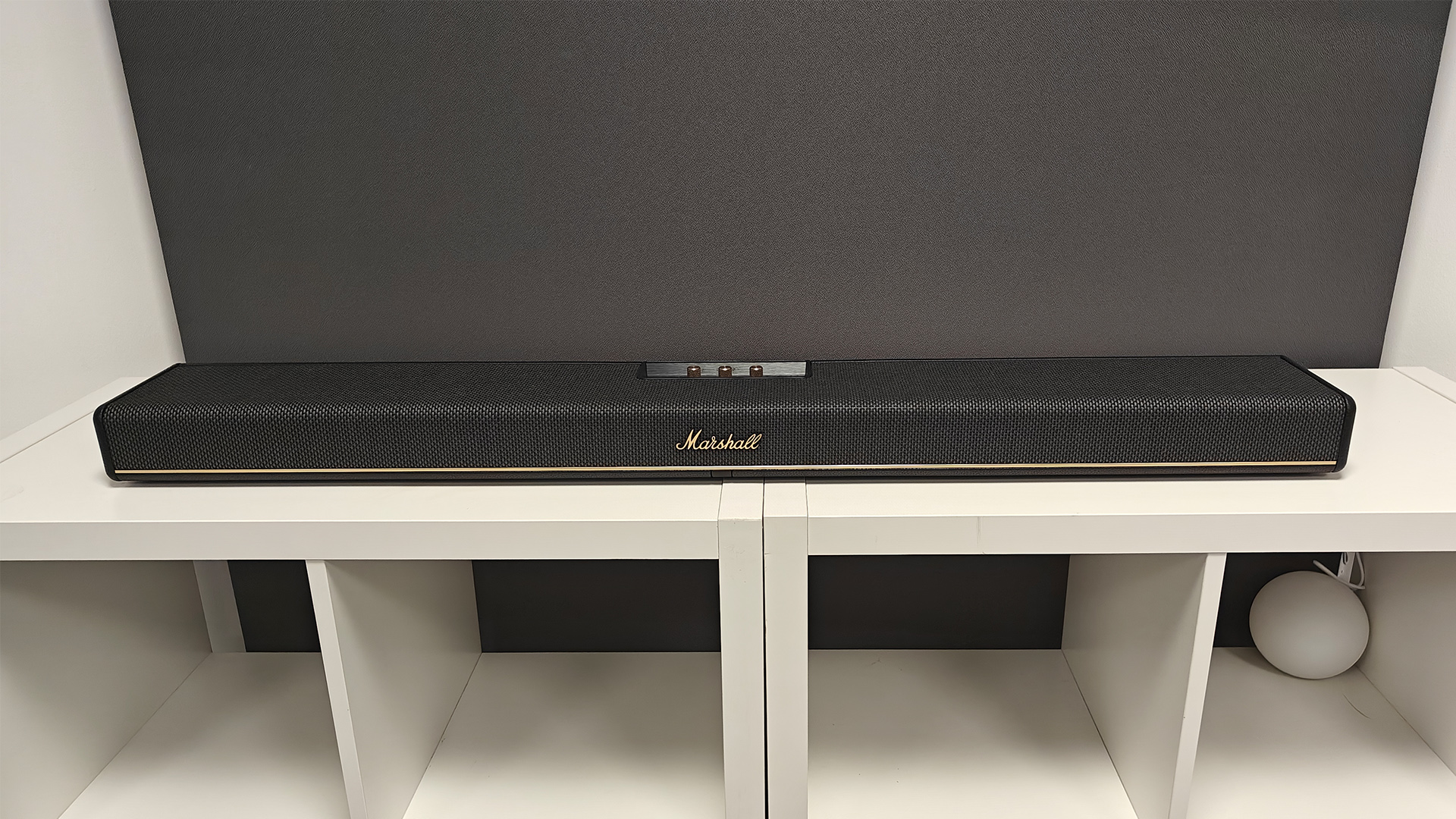
The final flaw in the Marshall soundbar’s performance is its underwhelming Dolby Atmos delivery.
The Atmos sound stretches beyond the extremes of the partnering TV, of course, but not very far. The whole presentation is confined to the far wall of the room, not stretching out towards the listening position, let alone above it.
This gives the whole presentation a rather distant feel, and while truly room-filling sound is almost impossible to get from a solo soundbar, rivals such as the Sonos Arc Ultra have a much better stab at it – and make the Marshall sound very confined in comparison.
As a helicopter hovers above the main characters, it should sound as if it’s directly above the listener. From the Marshall, it sounds as if it’s hovering just three or four feet above the top edge of the TV.
Does the Marshall Heston 120 perform better with music? Not particularly.
Despite the change in preset from Movie to Music, the same broad traits remain, and everything we play, including Hammer by Lorde, Trials Of The Past by SBTRKT and Invincible by Tool, suffers from the soundbar’s lack of dynamic expression and definition.
Like the dialogue in movies, the vocals in music are presented with good clarity and detail. Unfortunately, they’re left sounding separate from the rest of the track, with the instrumentation pushed to the background, where it sounds rather cluttered and soft.
Verdict
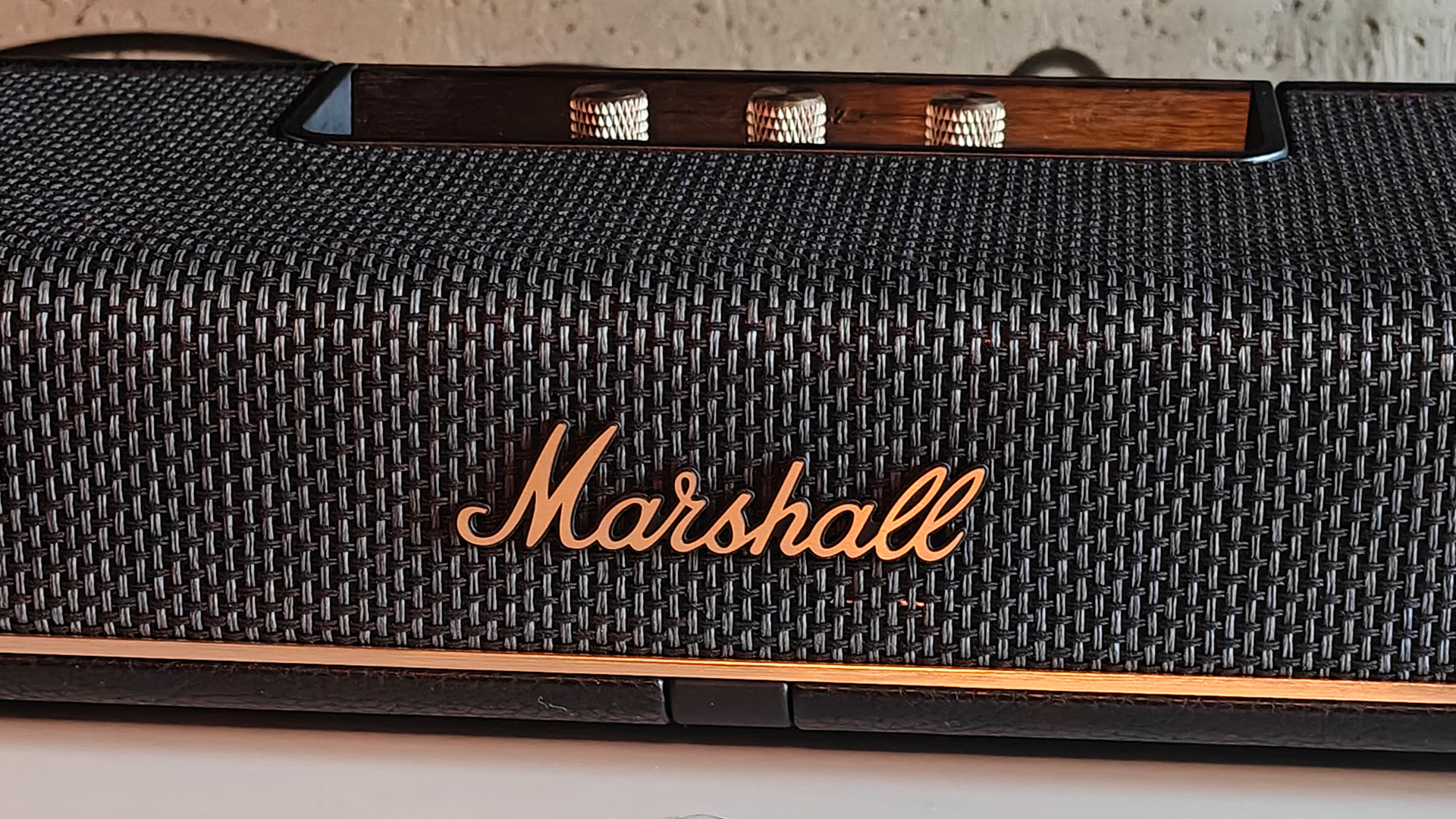
The Marshall Heston 120 is certainly an improvement on any TV’s speakers, producing a weighty sound and clear dialogue. That’s really the very least we expect from a soundbar, though, particularly one in this price range.
Ultimately, the Heston 120 commits one of the cardinal sins of home audio – it sounds lifeless.
A lack of dynamics and punch means those big movie moments sound flat and soft, and the disappointing Dolby Atmos doesn’t surround you in sound the way the best soundbars do.
The unique design is nice and will draw the eye of many a musician, but there are much better soundbars available for the same money.
SCORES
- Sound 3
- Features 5
- Build 4
MORE:
Read our Sonos Arc Ultra review
Also consider the Sony Bravia Theatre Bar 9
Here are the best Dolby Atmos soundbars we've tested and recommend
Robyn Quick is a Staff Writer for What Hi Fi?. After graduating from Cardiff University with a postgraduate degree in magazine journalism, they have worked for a variety of film and culture publications. In their spare time, Robyn can be found playing board games too competitively, going on cinema trips and learning muay thai.
You must confirm your public display name before commenting
Please logout and then login again, you will then be prompted to enter your display name.
